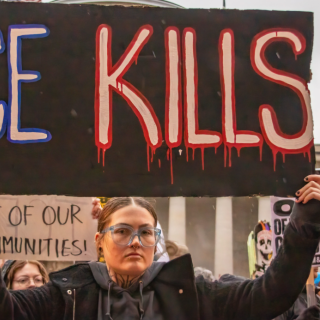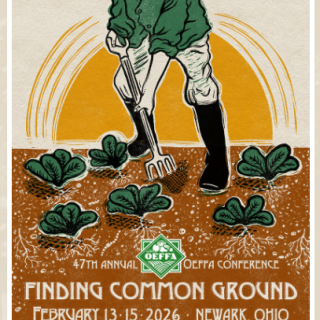Black immigrants have been methodically making their mark in Ohio with little notice or fanfare for decades, until Haitian-Ohioans in Springfield were unwittingly thrust into the national political conversation. “Black Immigrants in Ohio: A Demographic Data Brief” is the latest installment from “Behind Closed Doors: Black Migrants and the Hidden Injustices of U.S. Immigration Courts,” a multi-year research project led by Nana Afua Y. Brantuo, PhD for the Ohio Immigrant Alliance.
This demographic data brief is a snapshot in time, relying primarily on available Census data, which is a couple years behind today’s reality. As the brief explores, official data collection methods fail to capture the full richness and contributions of Black and African diaspora immigrants, which has led some communities to attempt to collect data about themselves to paint a fuller picture.
According to the OHIA report, Black migration to Ohio was led by African Americans during the end of formal slavery and the Great Migration. It continued through successive international movements of people from Africa, the Caribbean, and other regions seeking the same things everyone needs — opportunities for education, jobs, and a safe place to raise their families.
Viles Dorsainvil and Rose-Thamar Joseph of the Haitian Community Help and Support Center in Springfield, Ohio introduce themselves and invite all like-minded individuals to join them, in this English and Haitian Creole video. “This is all that the world has to know about us as Haitians and Springfield,” they said. “So if you wanna be part of the solution, you can rally with us. We are open. We believe in communication. We believe in humanity. We believe in giving service to people. And we are here to work with the city officials. We are here to work with local leaders and businesses, wherever you are around the world or across the land of the USA, you can rally with us and be part of the solution.”
Demba Ndaith, an organizer with the Ohio Immigrant Alliance, also invited interested individuals to learn more about the Senegalese-Mauritanian community making its mark in Columbus and beyond in a video. ”Over the past decade, it's amazing to see how we've contributed to the cultural life and economy of this city. For example, checkout Sido, Madina Market, Chez Rama, all these businesses that have been created over the years here and are hiring many people, not only people from our community. We've also got a car dealership, a mechanic shop like Farba to repair cars, among other businesses that are now part of the economic fabric of this great city. It feels good to know that we are making a positive impact. We are a community that values hospitality and genuinely loves Ohio. Let's continue to grow together and make Ohio a beautiful place — a better place for everyone.”
Added Dr. Dorothy Hassan, CEO of Our Helpers, “The Black immigrant community in Central Ohio faces a multitude of systemic barriers that stifle their opportunities for success. From economic disparities to high levels of housing and healthcare insecurity, they bear the brunt of institutional racism that affects Black and brown people across the nation. This report shines a spotlight on the unique struggles and resilience of Black immigrants, providing essential insights for policymakers and advocates to dismantle barriers and promote equity for these vital contributors to Ohio’s cultural and economic landscape."
According to the report, as of 2021 Ohio was home to an estimated 90,000 foreign-born Black residents, representing about 6% of the overall Black population in Ohio (ACS 5-Year Estimates, 2021). The last decade has seen substantial growth within this demographic, spurring new community formations, cultural influences, and economic impacts. Black immigrants now live and work across Ohio — as nurses in Cleveland hospitals, production workers in Dayton factories, professors at Columbus universities, and entrepreneurs opening restaurants in Cincinnati. They are part of the social fabric that makes Ohio the diverse state that it is.
Additional ReadingThis is the fifth installment in a series by the Ohio Immigrant Alliance entitled, “Behind Closed Doors: Black Migrants and the Hidden Injustices of US Immigration Courts.”
Find this and prior publications at illusionofjustice.org or https://ohioimmigrant.org/2024/10/08/behind-closed-doors-report-roundup.
For further discussion about racism in immigration law, policy, and structures, as well as firsthand accounts, read or listen to “Broken Hope: Deportation and the Road Home” by Lynn Tramonte and Suma Setty, with research by Maryam Sy.



